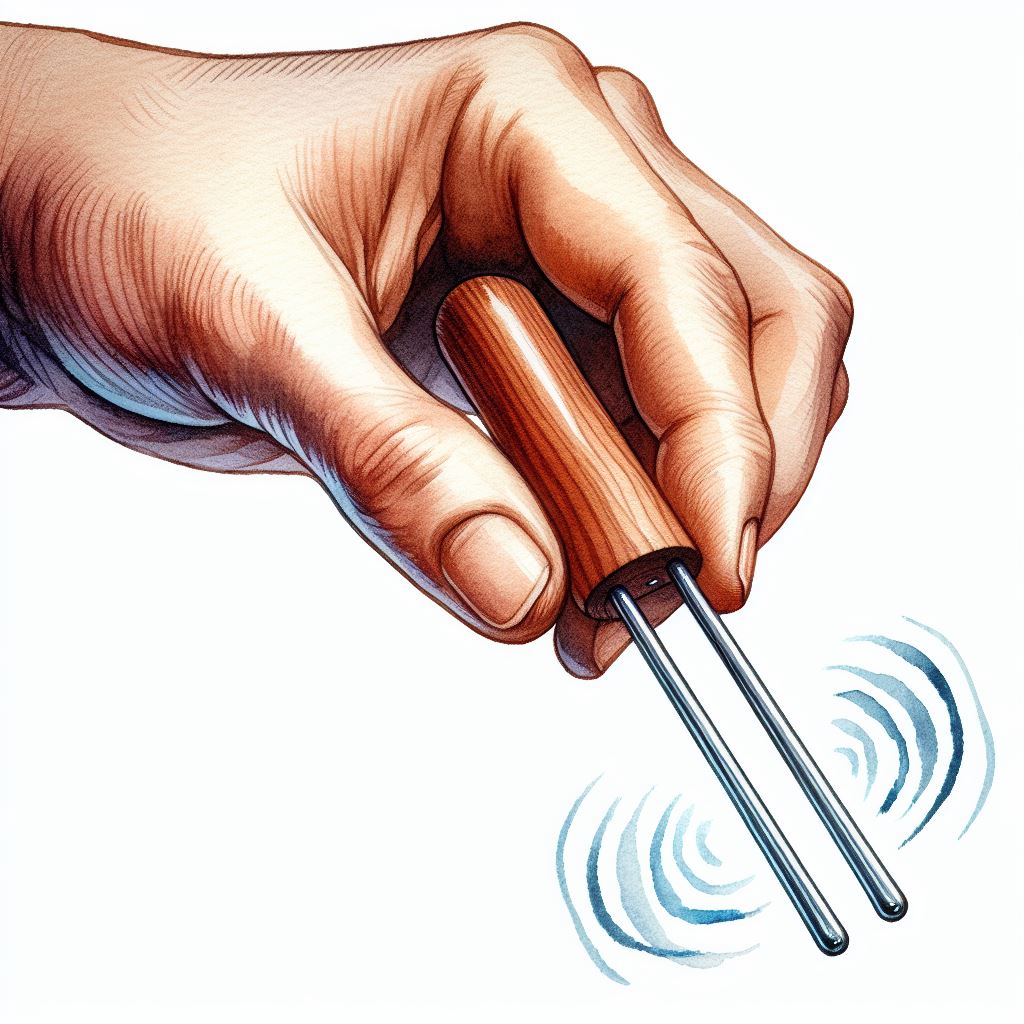Imagine a world where the pathway to relaxation, balance, and physical harmony is as simple as the sound of a tuning fork. This isn’t just a figment of the imagination; it’s the reality of sound healing, an ancient practice that has been used for centuries to promote wellbeing and healing.
Sound healing with tuning forks combines the science of sound with the art of healing, offering a unique and fascinating approach to wellness that many are just beginning to explore.
The Science Behind Sound Healing
Sound healing operates on the principle that everything in the universe, including our bodies, is in a state of vibration. The most fundamental element of the human being is the cellular level, and it is here that the vibration has the most profound effect. When a tuning fork is struck, it emits a pure sound wave or vibration that can interact with the body’s own vibrations.
Think of it as a form of vibrational medicine, where the right frequencies can help bring our cells, and ultimately our whole body, back into a state of balance and harmony. This concept isn’t just mystical speculation; it’s grounded in physics and has been the subject of various scientific studies that suggest sound can indeed influence our health in significant ways.
What Are Tuning Forks?
Tuning forks are simple tools that, when struck, produce a single sound frequency. They have been used since their invention in 1711, not just for tuning musical instruments, but also in medical fields to assess hearing and now, more recently, in the practice of sound healing. A tuning fork consists of a handle and two prongs known as tines.
When the tines are struck, they vibrate, producing a sound wave at a specific frequency. This sound wave is what’s used in sound healing sessions. There are two main types of tuning forks: weighted and unweighted. Weighted forks, which have added mass on the ends of the tines, are typically used on the body for a more direct application of vibration. Unweighted forks, on the other hand, are more often used around the body in the energy field or aura.

How Tuning Forks Are Used in Sound Healing
In a sound healing session with tuning forks, practitioners may use a variety of techniques to apply the healing vibrations. The process begins by activating the fork, usually by striking it against a rubber mallet or the practitioner’s hand, to start it vibrating. The vibrating fork can then be placed near or on the body. Placement on the body is direct and aims to transmit the fork’s vibrations into the physical self, targeting specific areas that may benefit from those frequencies.
Alternatively, holding the fork in the energy field around the body addresses more of the subtle, energetic aspects of our being. The intention behind the use of tuning forks is crucial; it’s believed that the healing effect is enhanced by the practitioner’s focused intention on wellbeing and balance.
The Benefits of Sound Healing with Tuning Forks
The benefits of sound healing with tuning forks are both broad and profound, touching on physical, emotional, and spiritual levels of wellbeing.
Users and practitioners report a wide range of positive effects, from reduced stress and anxiety to improved sleep, increased focus, and relief from physical pain. The vibrations from tuning forks can help to release tension in the body and mind, leading to a state of deep relaxation. This relaxation response can decrease the level of cortisol, a stress hormone, in the body, thereby promoting healing and wellbeing.
Additionally, the specific frequencies used in tuning fork therapy are said to help align and balance the body’s energy centers or chakras, contributing to a sense of peace and overall wellness. While scientific research into the efficacy of sound healing is ongoing, preliminary studies suggest that sound therapy, including the use of tuning forks, can have a measurable impact on the body’s stress response, blood pressure, and pain perception.
Getting Started with Tuning Forks
For those interested in exploring the healing potential of tuning forks, getting started is both exciting and straightforward. The first step is choosing the right tuning fork. Beginners might opt for a fork tuned to 528 Hz, known as the “Love Frequency,” believed to promote healing and wellbeing. When purchasing a tuning fork, look for one made of high-quality materials, as this affects the purity of the tone and its healing properties.
Learning to use the fork properly is the next step; this involves striking it against a hard, rubbery surface to initiate vibration and then either placing it on the body or holding it near the body to let the sound waves do their work. Practicing mindfulness and setting a clear intention for healing can enhance the experience and potential benefits.
Safety is paramount, so it’s essential to avoid using tuning forks near the ears to prevent hearing damage and to use gentle pressure when applying them directly to the body.
Professional Use of Tuning Forks
Tuning forks are not only for personal use but have also found their place in professional settings. Therapists, wellness practitioners, and even some medical professionals incorporate tuning forks into their practice to enhance physical and emotional healing.
Professional use of tuning forks requires a deeper understanding of sound therapy principles and often certification in sound healing techniques. These professionals are trained to use tuning forks in more targeted ways, addressing specific health issues and balancing the body’s energy more precisely. For anyone interested in integrating tuning forks into their professional practice, pursuing training and certification from reputable sound healing institutions is a recommended path.
Incorporating Tuning Forks into Your Wellness Routine
Adding tuning forks to your daily wellness routine can be a simple yet profound way to enhance your overall health and wellbeing. You might start or end your day by spending a few minutes in a quiet space, using your tuning fork to help center your thoughts and calm your mind. Incorporating tuning forks into meditation or yoga practices can also deepen the relaxation and mindfulness achieved during these activities.
For those with busy schedules, even just a few moments spent with a tuning fork can provide a quick reset, reducing stress and improving focus. As with any wellness practice, consistency is key, and the more regularly you incorporate tuning forks into your routine, the more significant the benefits you are likely to experience.
In conclusion, tuning forks offer a unique and effective way to explore the healing potential of sound. Whether you’re looking to reduce stress, improve your sleep, or simply find a new way to relax and rejuvenate, tuning forks can be a valuable addition to your wellness toolkit. By understanding the science behind sound healing, choosing the right tools, and practicing with intention, you can unlock the harmonious benefits of this ancient healing practice.















